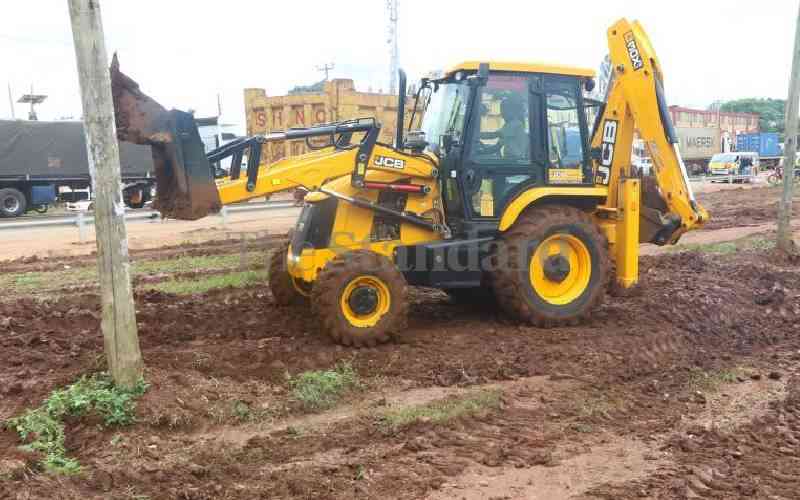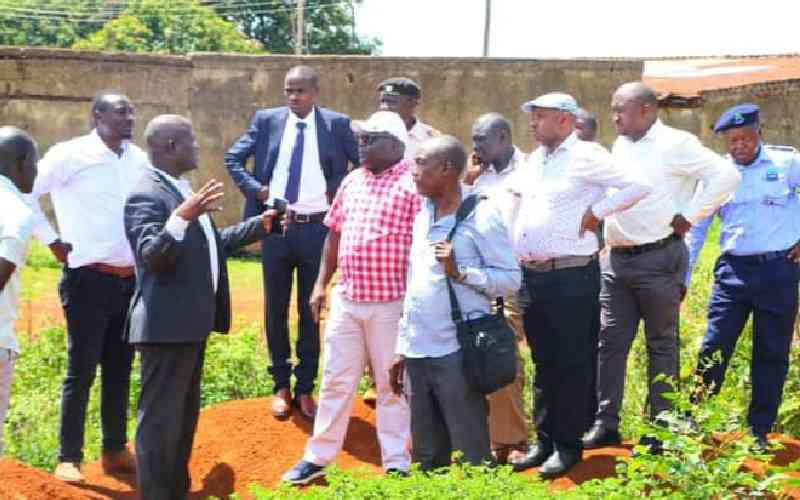By FRANCIS ONTOMWA and JANE CHEROTICH
Leaders in Busia County have blamed the failure to devolve education to the county level and a biting shortage of teachers as some of the major contributors of poor academic performance in the sector.
Some of the schools in the county lack classrooms, with many students learning under trees.
Governor Sospeter Ojaamong, Funyula MP Paul Otuoma and educationists from the region want the national government to examine the current arrangement in which the Teachers Service Commission (TSC) still employs teachers while the national government caters for infrastructure with a view to devolving some of those functions to county level.
“We are the ones on the ground and we interact with the teachers, learners and the community at a closer range. If we can have the role of infrastructure resting on counties, things would change greatly. We are only interested in ensuring our schools perform better and education improves,” said Ojaamong during the Samia District Education Day that was held on Monday in Funyula.
INFRASTRUCTURAL DEVELOPMENT
Governor Ojaamong says he is pressing for devolution of the role of infrastructural development to counties to accentuate proper action.
“The national government should deal with policy issues like remuneration of teachers and leave construction of physical facilities, equipping and rehabilitation of schools to counties,” Ojaamong said.
Dr Otuoma observed that poor performance may become cyclic should devolution not be applied according to the spirit and letter of the Constitution.
“Surely, if we cannot allow counties to identify their pitfalls and repair them, then why do we have devolution? Local problems must be sorted out through local solutions; that is the pinnacle of devolution,” said Otuoma.
Speaking at the same event, academician Joseph Were said there was need for dire surgery of the deteriorating standards.
Mr Were, the principal of Sigalame Boys High School, said the first step would be to fix the teacher shortage that stands at a deficit of about 50 per cent in both primary and secondary schools, thus weakening the teacher-student ratio.
STRONG LAWS
“We are operating under very strenuous circumstances as teachers and this is one of the main reasons we have not been able to make meaningful strides. Teacher shortage is a real problem,” said Were.
Mark Oseno of the Kenya National Union of Teachers (Knut) said most schools in the county needed a sprucing up of laboratories, libraries and computer units.
Stay informed. Subscribe to our newsletter
“Busia has many new schools, and although we appreciate the fact that they cannot be developed instantly, we need to shift focus to provide these basics if we are to boost our standards,” Oseno said.
Busia County Speaker Bernard Wamalwa said there was need to formulate proper legislation to cushion the sector, adding that there was commitment from the county assembly to help achieve this.
“What we need are strong laws if we are to salvage education levels in this county. The county assembly is well aware of this and we are working towards that realisation,” said Wamalwa. “We have many of our students shining in different parts of this country simply because we have not upped standards in our schools,” he added.
TOP SCHOOLS
The leaders also raised concern over the growing population in the county, saying the rapid population growth rate could pose a serious challenge to stabilising the educational sector.
According to the Kenya Demographic and Health Survey (KDHS), Busia County’s fertility rate stands at an alarming 10.6.
Top schools that have managed to strike consistency in the county include St Cecilia Nangina Girls and Sigalame Boys high schools.
 The Standard Group Plc is a
multi-media organization with investments in media platforms spanning newspaper
print operations, television, radio broadcasting, digital and online services. The
Standard Group is recognized as a leading multi-media house in Kenya with a key
influence in matters of national and international interest.
The Standard Group Plc is a
multi-media organization with investments in media platforms spanning newspaper
print operations, television, radio broadcasting, digital and online services. The
Standard Group is recognized as a leading multi-media house in Kenya with a key
influence in matters of national and international interest.
 The Standard Group Plc is a
multi-media organization with investments in media platforms spanning newspaper
print operations, television, radio broadcasting, digital and online services. The
Standard Group is recognized as a leading multi-media house in Kenya with a key
influence in matters of national and international interest.
The Standard Group Plc is a
multi-media organization with investments in media platforms spanning newspaper
print operations, television, radio broadcasting, digital and online services. The
Standard Group is recognized as a leading multi-media house in Kenya with a key
influence in matters of national and international interest.








